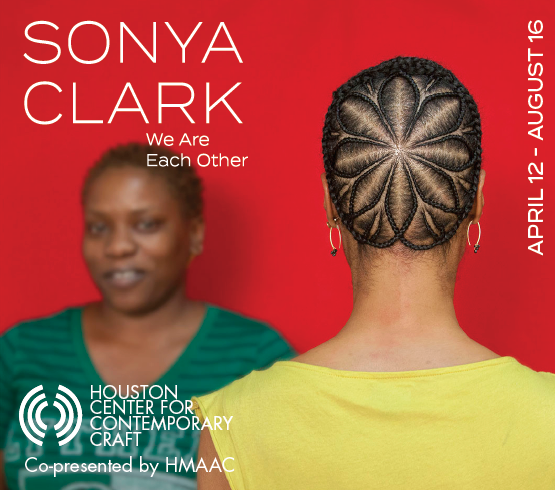Carlos Donjuan is known for his surrealist paintings of masked figures punctuated by pops of searing color, striking minimalist shapes, and spurts of spray-paint that nod to his graffiti-painting artistic origins. These are the kinds of artworks that Donjuan features in his current small group-exhibition at the McNay Art Museum, Beyond Reality, which is on view through Aug. 13, as well as his soon-to-be-unveiled permanent installation with Meow Wolf Grapevine, opening in the summer of this year.
For the McNay exhibit, Donjuan’s work is paired with that of sculptors Ernesto Ibañez and Dan Lam and painter Angela Fox for a full-spectrum visual feast that will elicit associations with everything from Mesoamerican mythology to elementary school slime. The elements linking these Texas-based artists are primarily formal, but as we all know, form is content. For Donjuan, recent life experiences have found their way into his practice in an aesthetic way.
“I’m working on my next solo show at Kirk Hopper,” he says; the show will open in June. It’s “a different body of work for me, all gray scale, I’m working with new ideas,” he explains. The last several years have been a period of loss and grief for Donjuan and his close-knit family, a series of events that literally sapped the color from his work. A miscarriage in 2016, followed by the decline of his father’s health and eventual passing led to dissatisfaction with painting and drawing for the first time in his artistic career. “I know how to develop my own film; black and white photography helped me get through,” the artist says.
Donjuan is forthcoming about these difficult life events, but part of the surrealist aspects of his work is a mechanism for keeping distance. “I balance it by not giving too much and still holding on to some things for myself,” he says. “For me, one of the things I’ve always looked for in my life is being honest, but I try to be careful how much visual exposure I give through these images. I incorporate masks. I create a new narrative that is true to me.” Features are covered or partially obscured through Donjuan’s own menagerie of invented creatures, part cute, part eerie, and all allegorical. “I’m okay with making the work for myself first, being comfortable with myself and that helps with the honesty.”

1 ⁄5
Carlos Donjuan, Never Die, Oil on Canvas, 48” x 48” 2022.

2 ⁄5
Carlos Donjuan, Angel Baby, Oil on Canvas, 72” x 60” 2022.

3 ⁄5
Carlos Donjuan, Sleepy, Oil on Canvas, 48” x 48” 2022.

4 ⁄5
Carlos Donjuan, Spider, Oil on Canvas, 48” x 60” 2022.

5 ⁄5
Carlos Donjuan, Los Hermanos, Acrylic and Color Pencil on Panel on wall, 10’ x 20’ 2023. Photo by Paul A. Feuerbacher.
At this point in his career, Donjuan has also worked as a professor of art at The University of Texas at Arlington for many years. The University is designated as a Hispanic Serving Institution, meaning that 25% or more of the total undergraduate full-time student population is Hispanic or Latino. “My work connects with the growing Latino/Hispanic population,” he says, “it’s part of the fabric of who I am now. I’ve been a professor for fourteen years. I’ve learned to understand my worth as a professor, as a person of color.” Students of UTA see the value in this as well and have formed a coalition of Latino student leaders called the Hispanic Leadership Council, which met with University representatives to urge action on the “discrepancy between the percentage of Hispanic students compared to the percentage of Hispanic faculty and staff,” among other issues. (Ramirez, 2023).
Donjuan seems to take this political climate in stride, however. Perhaps this is because, as an artist, his work carries him beyond the borders of Texas frequently. “I’ve been able to show on the west coast, east coast, in Europe,” he says. His works are a part of the Cheech Marin Center for Chicano Art & Culture of the Riverside Art Museum, the nation’s first Chicano art museum located in Riverside, California, which opened just last summer. “It was an incredible experience to be surrounded by my art heroes, they knew who I was and wanted to meet me too,” the artist says of the museum’s opening. He is calm and confident about where his own artistic “voice” will lead. “I think it’s going to trigger a new round of interest.”
—CASEY GREGORY
Editor’s Note: The artist would like it to be known that the opinions stated in this story are his own and he does not speak for the University of Texas at Arlington.





